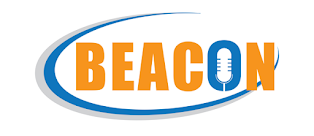
A Japanese Innovation Revolutionizes Solar Panels!
Semiconductor Inks: A Japanese Innovation Revolutionizes Solar Panels!
In a world striving to transition to clean and sustainable energy sources, Japan and a group of researchers at the American Institute of Technology (MIT) appear to have opened the door to a new revolution in solar energy.
They have developed a solar panel thinner than paper, with amazing flexibility, and can be mounted on almost any surface—from clothing to tents and even drones. For more than 70 years, the structure of solar panels has changed little: silicon cells sandwiched between glass and plastic, supported by heavy metal frames
. But this traditional model is about to change radically, according to the Eco Portal website, as reviewed by Al Arabiya Business. A research team led by Professor Vladimir Bulovic at MIT has succeeded in developing organic solar cells that can be printed onto thin plastic sheets using electronic inks and then glued to a super-strong fabric known as Dyneema—the same fabric used in bulletproof vests. This method is similar to printing T-shirts.
These cells require less infrastructure than conventional solar cells, making them 1/100 lighter.
Polovic emphasized that Dyneema fibers are extremely durable, which is why bulletproof vests are made from them. In addition to their durability, these ultra-thin sheets offer other impressive advantages, such as their ability to be used on virtually any surface (anything that can be packaged).
minimal installation requirements, and the ability to provide energy on the go, whether in remote locations or as a wearable energy fabric. They are lightweight and produce 18 times more energy per kilogram. The semiconductor inks used in the printing process can be scaled up for mass production.
"The metrics used to evaluate new solar cell technologies are typically limited to power conversion efficiency and cost per watt. Equally important is integration—the ease with which a new technology can be adapted. Lightweight solar fabrics enable integration, providing momentum for current work. We strive to accelerate solar adoption, given the urgent need to deploy new, carbon-free energy sources," said Bulovic.
The team will replace their cells with perovskite solar cells in the future to match the efficiency of conventional solar panels. So far, they've achieved their goal of increasing solar energy access and transmission. In the new era of photovoltaics, it seems the thinner the technology, the better!















No comments:
Post a Comment